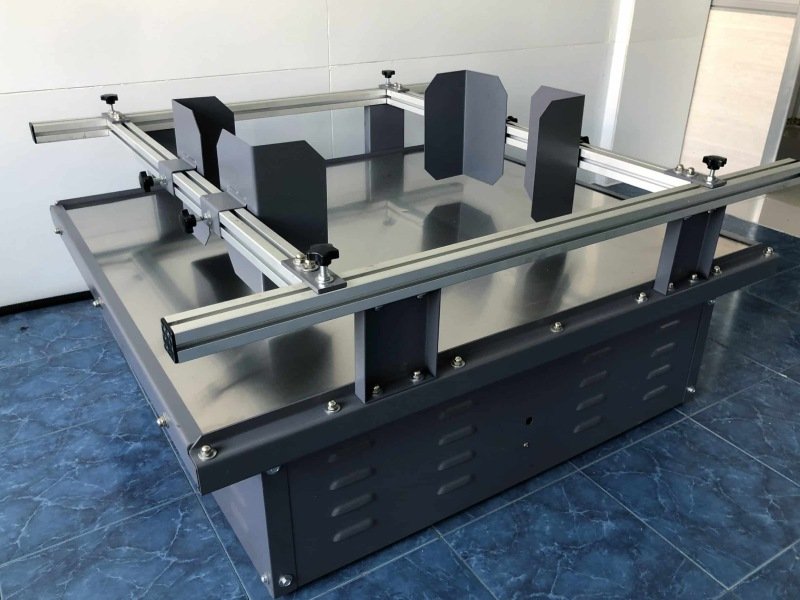When you’re buying hardware for electrical cabinets, choosing the right latch can feel overwhelming. Latches secure doors, panels, and access points, ensuring safety and functionality in industrial settings. Two common types you’ll come across are spring-loaded and non-spring latches. Each has its own features, benefits, and drawbacks, and understanding the differences is key to picking the right one for your electrical cabinets. This article breaks it down in simple terms for someone new to industrial purchasing, focusing on how these latches work in electrical cabinet applications. We’ll cover what they are, how they function, their pros and cons, and factors to consider when choosing one for your needs.
What Are Latches and Why Do They Matter?
Before diving into the differences, let’s start with the basics. A latch is a mechanical device that holds two parts together, like a cabinet door and its frame, while allowing the door to be opened when needed. In electrical cabinets, latches are critical because they keep sensitive equipment safe from dust, moisture, tampering, or accidental opening. They also ensure workers can access the cabinet easily for maintenance or repairs.
Electrical cabinets house wiring, control panels, and other critical components, often in harsh environments like factories, outdoor sites, or marine settings. The wrong latch could lead to equipment failure, safety hazards, or costly downtime. That’s why picking the right latch—spring-loaded or non spring—is a big deal for an industrial buyer.
What Is a Spring-Loaded Latch?
A spring-loaded latch is a type of latch that uses a spring mechanism to keep it engaged. The spring applies constant pressure to hold the latch in a locked or closed position. To open it, you manually pull, push, or rotate the latch, overcoming the spring’s tension. Once you release it, the spring snaps the latch back to its locked position automatically.
How It Works
Imagine a cabinet door with a spring-loaded latch. The latch has a metal or plastic arm that hooks onto a catch or strike plate on the cabinet frame. Inside the latch, a spring pushes the arm into the catch, keeping the door shut. When you pull a handle or press a button, the arm moves against the spring, releasing the catch and opening the door. When you let go, the spring pushes the arm back into place, ready to lock again when the door closes.
Types of Spring-Loaded Latches
Spring-loaded latches come in several styles, each suited for specific needs in electrical cabinets:
- Pull Latches: You pull a handle to release the latch. Common in industrial equipment.
- مزاليج دوارة: These rotate to engage or disengage, ideal for heavy-duty applications.
- Toggle Latches: A lever flips to lock or unlock, often used for secure fastening.
- Compression Latches: These pull the door tightly against the frame, creating a seal against dust or water.
- أقفال سلام: The door slams shut, and the spring-loaded cam locks it automatically.
المواد الشائعة
Spring-loaded latches are made from materials that withstand tough conditions:
- الفولاذ المقاوم للصدأ: Resists rust, perfect for outdoor or wet environments.
- ألومنيوم: Lightweight but strong, used in aerospace or automotive cabinets.
- Durable Plastic: Cost-effective and corrosion-resistant for less demanding settings.
What Is a Non-Spring Latch?
A non-spring latch, as the name suggests, doesn’t use a spring to hold it in place. Instead, it relies on manual action, gravity, or a mechanical catch to stay locked. To open or close it, you physically move the latch into position, and it stays there until you move it again.
How It Works
Picture a simple hook-and-eye latch on a cabinet door. You lift the hook to open the door and drop it into the eye to lock it. There’s no spring pushing it back into place—it stays where you leave it. Non spring latches can also include magnetic catches, cam latches, or draw latches that require manual engagement.
Types of Non-Spring Latches
Non spring latches come in various forms, often simpler than their spring-loaded counterparts:
- مزاليج الكامات: A lever or key turns a cam to lock or unlock the door.
- Magnetic Latches: Magnets hold the door closed until you pull it open.
- Draw Latches: A lever or arm pulls two parts together, like on a toolbox.
- Turn Latches: You twist a knob or key to secure the door.
- Hook-and-Eye Latches: A basic hook catches onto a loop or eye.
المواد الشائعة
Like spring-loaded latches, non spring latches are made from durable materials:
- الفولاذ المقاوم للصدأ: Strong and rust-resistant for industrial use.
- Zinc or Brass: Affordable and corrosion-resistant for indoor cabinets.
- بلاستيك: Lightweight and cheap, used in low-stress applications.
Key Differences Between Spring-Loaded and Non-Spring Latches
Now that you know what each type is, let’s compare them directly. The differences come down to how they work, their ease of use, durability, and suitability for electrical cabinets.
1. Mechanism
- Spring-Loaded: Uses a spring to automatically engage the latch. The spring keeps constant pressure, so the latch snaps back to the locked position after being released.
- Non-Spring: Relies on manual action or a mechanical catch. You must physically move the latch to lock or unlock it, and it stays in that position.
2. Ease of Use
- Spring-Loaded: Easier to use in situations where quick or automatic locking is needed. For example, slam latches let you close a door, and the spring locks it without extra effort. They’re great for busy environments where workers need to open and close cabinets frequently.
- Non-Spring: Requires more deliberate action. You have to manually engage the latch to lock the door, which can be slower. However, this can be an advantage if you want to ensure the latch isn’t accidentally engaged.
3. Security
- Spring-Loaded: Offers better resistance to vibration and accidental opening. The spring keeps the latch firmly in place, even in high-vibration environments like factories or vehicles. Some types, like compression latches, create a tight seal, adding extra protection against dust or water.
- Non-Spring: Less resistant to vibration unless designed with a strong mechanical catch. Magnetic latches, for instance, can pop open if the door is jolted. However, latches like cam or turn latches can include keyed locks for added security.
4. Durability
- Spring-Loaded: The spring adds complexity, which can be a weak point. Over time, springs may weaken or break, especially in harsh conditions or with frequent use. High-quality materials like stainless steel can extend lifespan.
- Non-Spring: Simpler design means fewer moving parts to wear out. Non spring latches are often more durable in low-maintenance settings but may not hold up as well in high-vibration or extreme environments.
5. التكلفة
- Spring-Loaded: Typically more expensive due to the spring mechanism and additional components. Prices vary based on material and type, but they’re often pricier than basic non spring latches.
- Non-Spring: Usually cheaper because of their simpler design. Magnetic or hook-and-eye latches are especially cost-effective, making them appealing for budget-conscious buyers.
6. Applications in Electrical Cabinets
- Spring-Loaded: Ideal for cabinets in demanding environments, like outdoor electrical boxes or factory control panels. Their ability to resist vibration and create tight seals makes them perfect for protecting sensitive equipment. Compression and slam latches are especially popular for weatherproof cabinets.
- Non-Spring: Better for indoor or less demanding settings, like office server cabinets or storage units. They’re also useful when you need a latch that stays open or closed without automatic engagement, such as for maintenance access.
Pros and Cons of Spring-Loaded Latches
الإيجابيات
- Automatic Locking: The spring ensures the latch locks without extra effort, saving time.
- Vibration Resistance: Stays secure in high-vibration environments, like machinery or vehicles.
- Tight Sealing: Compression latches create airtight or watertight seals, protecting cabinet contents.
- سهولة الاستخدام: Quick to open and close, ideal for frequent access.
- تعدد الاستخدامات: Available in many types for different cabinet needs.
السلبيات
- التعقيد: More parts (like the spring) can wear out or break.
- التكلفة: Generally more expensive than non spring latches.
- Maintenance: Springs may need occasional replacement in heavy-use settings.
- Accidental Engagement: The spring can lock the latch unintentionally if not handled carefully.
Pros and Cons of Non-Spring Latches
الإيجابيات
- Simplicity: Fewer moving parts mean less chance of mechanical failure.
- Cost-Effective: Cheaper to buy, making them great for large-scale projects.
- المتانة: Less prone to wear in low-vibration or indoor settings.
- Manual Control: You decide exactly when to lock or unlock, reducing accidental engagement.
- Variety: Options like magnetic or keyed latches offer flexibility.
السلبيات
- Manual Effort: Requires deliberate action to lock, which can be slower.
- Vibration Sensitivity: Less secure in high-vibration environments unless designed for it.
- Weaker Sealing: May not provide airtight or watertight seals without additional features.
- Less Convenient: Not ideal for frequent opening and closing.
Choosing the Right Latch for Electrical Cabinets
As a new industrial buyer, picking between spring-loaded and non spring latches depends on your specific needs. Here are key factors to consider:
1. Environment
Where will the electrical cabinet be used? Outdoor or high-moisture settings (like marine or coastal sites) need rust-resistant materials and tight seals. Spring-loaded compression latches are often the best choice here. Indoor cabinets in controlled environments can use simpler non spring latches like magnetic or cam latches.
2. Vibration
If the cabinet is in a factory, vehicle, or near heavy machinery, vibration is a concern. Spring-loaded latches, especially rotary or compression types, stay secure under these conditions. Non spring latches may loosen unless they have a strong mechanical catch.
3. Access Frequency
How often will workers need to open the cabinet? For frequent access, spring-loaded latches are faster and easier. For cabinets opened rarely, like backup power boxes, non spring latches are sufficient and cost-effective.
4. Security
Do you need to prevent unauthorized access? Spring-loaded latches with keyed locks or compression features offer better security. Non spring cam or turn latches can also include locks but may not resist tampering as well in harsh conditions.
5. Budget
If you’re outfitting many cabinets, cost matters. Non spring latches are cheaper, especially for indoor use. If you need durability and sealing, spring-loaded latches are worth the extra cost for critical applications.
6. Maintenance
Consider how much upkeep you can manage. Spring-loaded latches may need occasional spring replacement, especially in heavy use. Non spring latches require less maintenance due to their simpler design.
7. Industry Standards
Electrical cabinets often need to meet standards like NEMA or IP ratings for dust and water resistance. Spring-loaded compression latches are more likely to meet high IP ratings (e.g., IP65 for water resistance). Check your industry requirements before choosing.
Real-World Examples
To make this clearer, let’s look at two scenarios:
Scenario 1: Outdoor Electrical Cabinet
You’re buying latches for cabinets housing power controls at a construction site. The cabinets face rain, dust, and vibration from nearby equipment. A spring-loaded compression latch made of stainless steel is ideal. It creates a watertight seal, resists rust, and stays secure despite vibration. The automatic locking saves workers time when accessing the cabinet.
Scenario 2: Indoor Server Cabinet
You need latches for server cabinets in an office data center. The environment is clean, with no vibration or moisture. A non spring magnetic latch or cam latch is enough. It’s cheap, easy to install, and lets technicians open the cabinet without fuss. Since security isn’t a major concern, a simple design works fine.
Tips for New Buyers
- Ask for Samples: If possible, test both latch types before buying in bulk. See how they feel and perform.
- Check Material Specs: Ensure the latch material (e.g., stainless steel) matches your environment.
- Read Reviews: Look at user feedback for specific latch models, especially for ease of installation and durability.
- Consult Suppliers: Talk to your latch supplier about your cabinet’s needs. They can recommend the best type.
- Plan for Installation: Some latches need precise alignment or special tools. Factor this into your decision.
- Think Long-Term: A slightly pricier latch might save money if it lasts longer or reduces maintenance.
Common Mistakes to Avoid
- Ignoring Environment: Don’t use a cheap plastic latch outdoors—it’ll fail quickly.
- Overlooking Vibration: Non spring latches in high-vibration settings can loosen, risking equipment exposure.
- Focusing Only on Cost: The cheapest latch might cost more in repairs or replacements later.
- Skipping Standards: Ensure your latch meets any required certifications for electrical cabinets.
- Poor Installation: Misaligned latches can jam or fail. Follow installation guides carefully.
الخاتمة
For a new industrial buyer, choosing between spring-loaded and non spring latches for electrical cabinets comes down to understanding your needs. Spring-loaded latches are best for harsh environments, frequent access, and vibration-heavy settings. They lock automatically, resist jolts, and often provide tight seals. Non spring latches are simpler, cheaper, and durable for indoor or low-stress applications, but they require manual effort and may not hold up in tough conditions.
Think about your cabinet’s environment, access frequency, security needs, and budget. For critical outdoor or industrial cabinets, spring-loaded compression or rotary latches are often the way to go. For indoor or budget-conscious projects, non spring magnetic or cam latches can do the job. By weighing these factors and avoiding common mistakes, you’ll pick a latch that keeps your electrical cabinets safe, functional, and cost-effective.
If you’re still unsure, reach out to your supplier or request samples to test both types. With the right latch, your electrical cabinets will stay secure and reliable for years to come.







